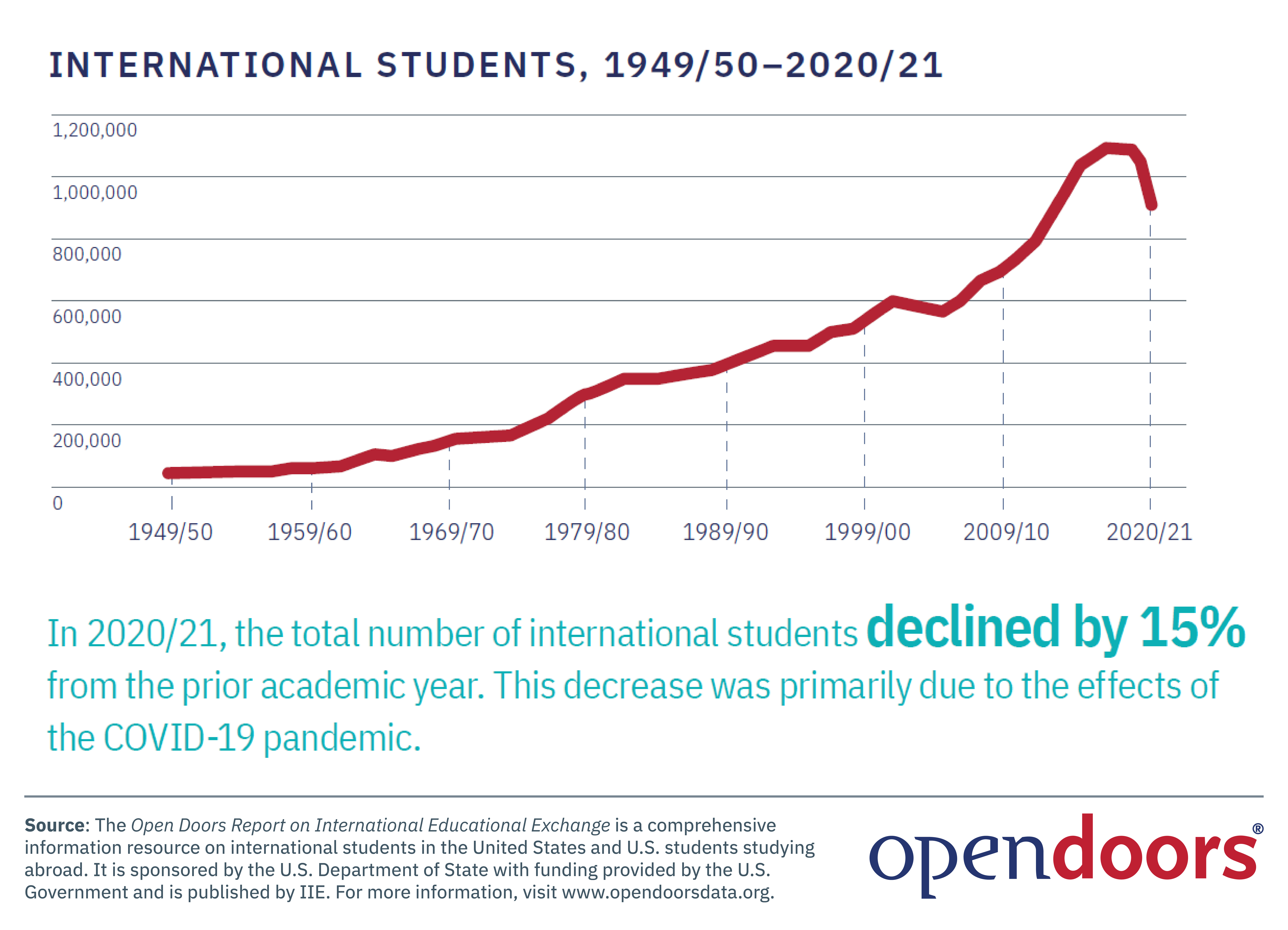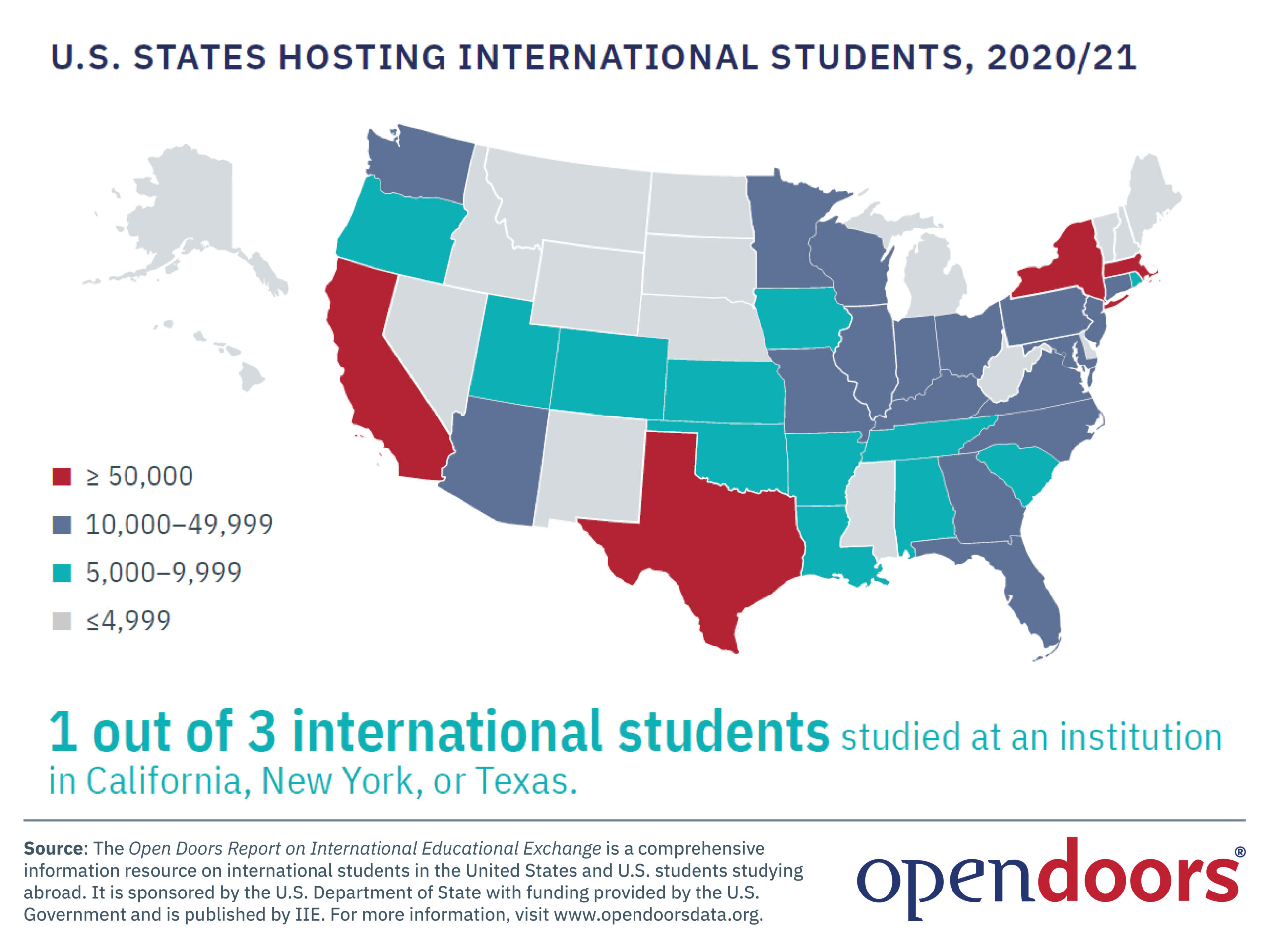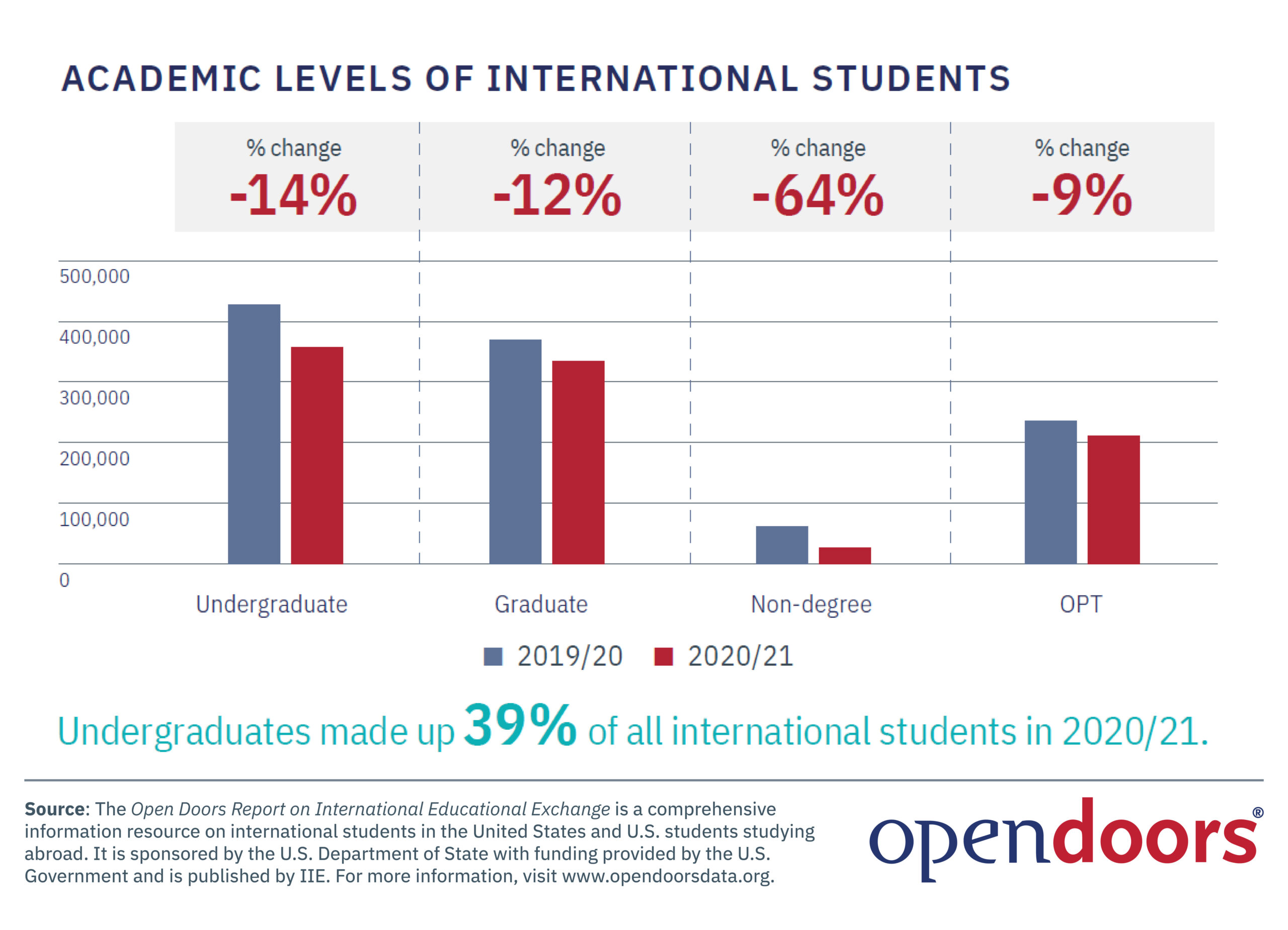After a deeply challenging year fueled by the COVID-19 pandemic, international student pathways are continuing to open up, according to preliminary data released Monday by the Institute of International Education.
In its new Snapshot of more than 800 institutions, the IIE and the U.S. State Department indicate a 4% increase overall in the number of international students this fall in higher education in both in-person and online modalities. That represents a steep turnaround from the 15% losses the sector saw from 2020-21 data highlighted in the Open Doors Report on International Exchange. The surge is being buoyed by a significant rise in new students, who struggled to gain access in 2020-21.
The news is a relief for many higher education leaders whose enrollments and budgets have been impacted heavily by last year’s losses. International students contribute nearly $40 billion to colleges and universities in the U.S. annually. Though there are still roadblocks preventing travel and accessibility, the signs of a turnaround are happening.
“People have deferred their dream to study abroad but haven’t abandoned it,” said Allan Goodman, CEO of the IIE, who said the organization has waded through 12 in its 102-year history. “What we know in each pandemic is that academic mobility occurs during it. When it’s controlled, there is a surge of the kind we very much hope to see. The data foreshadow that the same pattern will continue in the wake of this pandemic. For the U.S., it will increase and ramp up very rapidly in the years ahead.”
The Snapshot data does not provide as clear a picture as the Open Doors report, IIE head of research Dr. Mirka Martel warned, as more than 2,000 institutions are excluded. But it does offer two significant beacons of hope: 99% of reporting institutions are serving students in person or in a hybrid capacity, and 65% of international students are attending classes on campus.
“77% of reporting institutions indicate that financial support for their international student recruitment efforts is the same or higher than in previous years,” Martel said. “The findings underscore the continued commitment of U.S. institutions to international education and further highlight the appeal of a U.S. education to international students.”
Their efforts in remaining open and providing numerous options where they could to international students cemented their reputations during the height of the pandemic. Continuing international students, whether studying here or at home, fell off by only 3%.
“U.S. higher education institutions showed tremendous dedication and flexibility in their support of international students,” said Matthew Lussenhop, Acting Assistant Secretary in the Bureau of Educational and Cultural Affairs (ECA) at the State Department. “Colleges and universities prioritized the safety of all students and implemented online and hybrid teaching, as well as additional flexibilities in admissions and enrollment. Many institutions allowed students to defer enrollment. We applaud the incredible support that the entire higher education community has provided during this very challenging time.”
The U.S. welcomes all students
Though there was a significant drop in international student participation, it likely would have been worse if institutions and EducationUSA advising centers across the world serving more than 170 countries hadn’t been so adaptable. Those pivots even forced the IIE to recognize the status of an international student as being an in-person or online learner, or both.
Regardless of the freefall in enrollments year over the year caused by COVID-19, the U.S. remained the No. 1 destination for students coming from abroad, though there still will be strong competition from the UK, China, Canada and Australia as those countries open up. And yet, the U.S. and its institutions under the Biden Administration have welcomed the exchange of students even with its fiercest global rivals.
China, which far and away sends the most students to U.S. institutions, had 15% fewer students attend in 2020-21 because of the pandemic and restrictions. But Ethan Rosenzweig, Deputy Assistant Secretary at the State Department’s ECA, said he envisions those numbers getting back to pre-pandemic levels.
“We value our Chinese students and their partnerships here as members of the communities and the higher education institutions that they’re joining,” he said, citing the Biden Administration’s mission to keep pipelines open. “International students visiting, studying and being part of the community here and returning to their countries, is central to diplomacy and innovation, economic prosperity and national security.”
That, despite the ongoing concern of China’s rise on the global stage and its quest to gain an edge through innovation and invention.
“The concern over research integrity is a factor for a very small number of students,” he said. “For students who want an engaged educational experience in the United States, the doors are open for them. We’ve tripled the number of Chinese students here in the U.S. over the last decade. You can see that we are amplifying that we welcome students to the United States here for their educational purposes.”
The exchange – which also includes U.S. students studying abroad – also has beenmost welcome with India and South Korea, two of the top countries sending learners here. The nearly one million students overall provide a financial foundation for institutions and help support more than 400,000 jobs across the U.S.
Bringing those students back is still daunting during the ever-developing pandemic as China and other countries wrestle with outbreaks and lack of vaccinations. But institutions are continuing to find ways to get students here – or providing ways for them to take courses remotely.
“73% of reporting institutions are offering COVID-19 vaccines and testing to all on campus,” Martel says, “U.S. institutions are incredibly committed not only to having international students come to the United States but also for them to have a safe experience.”
.






